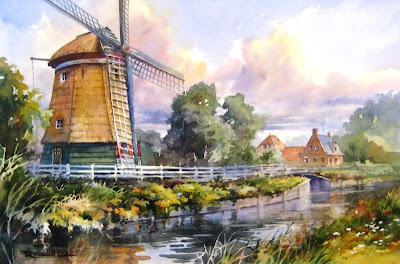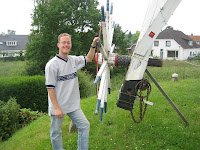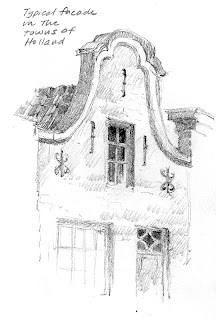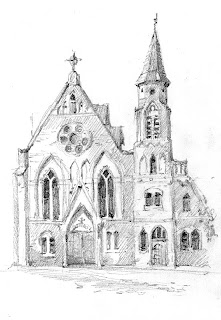 I have been invited by the Southern Utah Watercolor Society to teach a 3-day watercolor landscape workshop in St. George September 22-24, 2008. We will have two days of indoor instruction and the third day we will travel to Zion National Park to sketch and explore the park, followed by a visit to the St. George Art Museum where we will enjoy the new "Century of Sanctuary: Art of Zion National Park" exhibit. You will see the 78 pieces juried into the Centennial art competition, plus over 70 historic Zion paintings by such masters as Thomas Moran and Maynard Dixon. So join us for three days of fun learning how to paint the red rock country of southern Utah. The tuition for members of SUWS is $100, and $150 for nonmembers. Contact SUWS president Dick Rose to reserve your spot: (435) 635-4722. The workshop is imited to 20 people.
I have been invited by the Southern Utah Watercolor Society to teach a 3-day watercolor landscape workshop in St. George September 22-24, 2008. We will have two days of indoor instruction and the third day we will travel to Zion National Park to sketch and explore the park, followed by a visit to the St. George Art Museum where we will enjoy the new "Century of Sanctuary: Art of Zion National Park" exhibit. You will see the 78 pieces juried into the Centennial art competition, plus over 70 historic Zion paintings by such masters as Thomas Moran and Maynard Dixon. So join us for three days of fun learning how to paint the red rock country of southern Utah. The tuition for members of SUWS is $100, and $150 for nonmembers. Contact SUWS president Dick Rose to reserve your spot: (435) 635-4722. The workshop is imited to 20 people.2-DAY WATERCOLOR WORKSHOP SEP. 4-5
 Only 8 students can register for this intimate watercolor workshop. It is sponsored by Becky Whitney at "A Passion for Painting" Art gallery and cost is $150 per person. Sign up now by calling: (435) 628-5890.
Only 8 students can register for this intimate watercolor workshop. It is sponsored by Becky Whitney at "A Passion for Painting" Art gallery and cost is $150 per person. Sign up now by calling: (435) 628-5890. check out all my fall painting classes on my website.

























